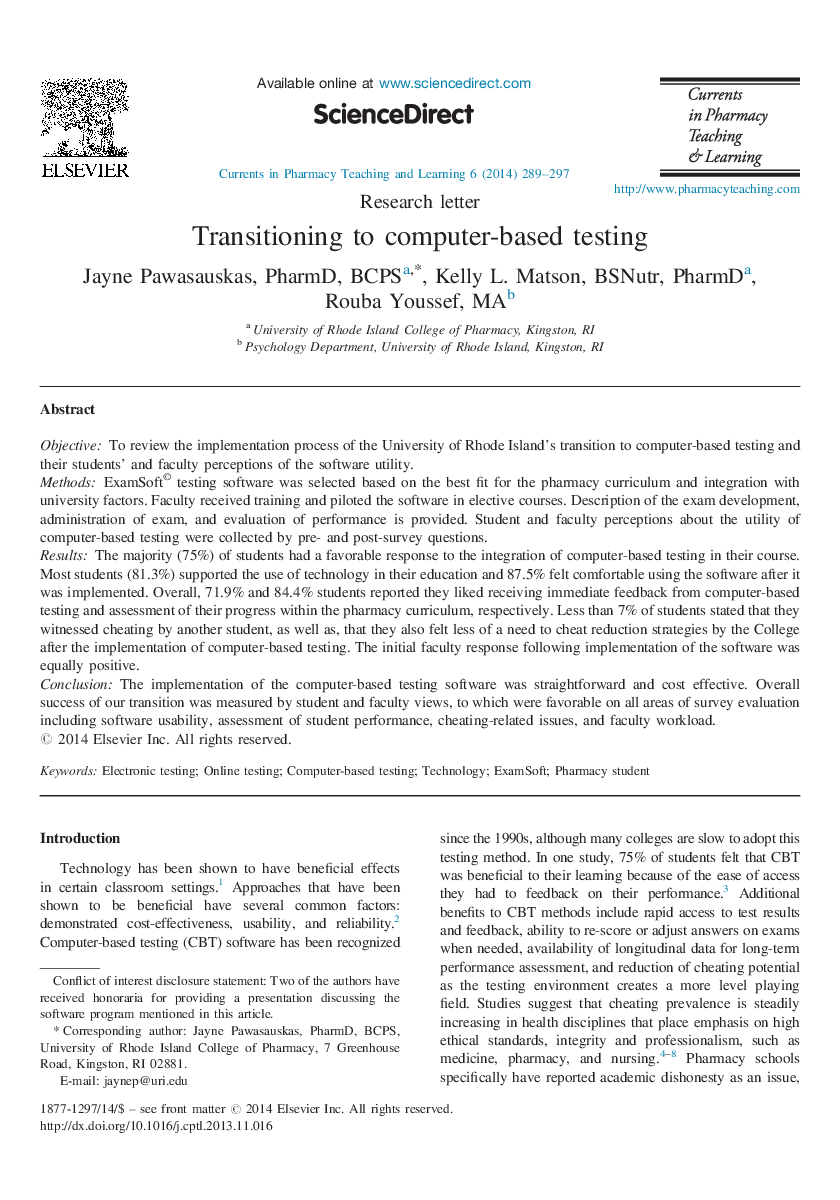| Article ID | Journal | Published Year | Pages | File Type |
|---|---|---|---|---|
| 353047 | Currents in Pharmacy Teaching and Learning | 2014 | 9 Pages |
ObjectiveTo review the implementation process of the University of Rhode Island’s transition to computer-based testing and their students’ and faculty perceptions of the software utility.MethodsExamSoft© testing software was selected based on the best fit for the pharmacy curriculum and integration with university factors. Faculty received training and piloted the software in elective courses. Description of the exam development, administration of exam, and evaluation of performance is provided. Student and faculty perceptions about the utility of computer-based testing were collected by pre- and post-survey questions.ResultsThe majority (75%) of students had a favorable response to the integration of computer-based testing in their course. Most students (81.3%) supported the use of technology in their education and 87.5% felt comfortable using the software after it was implemented. Overall, 71.9% and 84.4% students reported they liked receiving immediate feedback from computer-based testing and assessment of their progress within the pharmacy curriculum, respectively. Less than 7% of students stated that they witnessed cheating by another student, as well as, that they also felt less of a need to cheat reduction strategies by the College after the implementation of computer-based testing. The initial faculty response following implementation of the software was equally positive.ConclusionThe implementation of the computer-based testing software was straightforward and cost effective. Overall success of our transition was measured by student and faculty views, to which were favorable on all areas of survey evaluation including software usability, assessment of student performance, cheating-related issues, and faculty workload.
